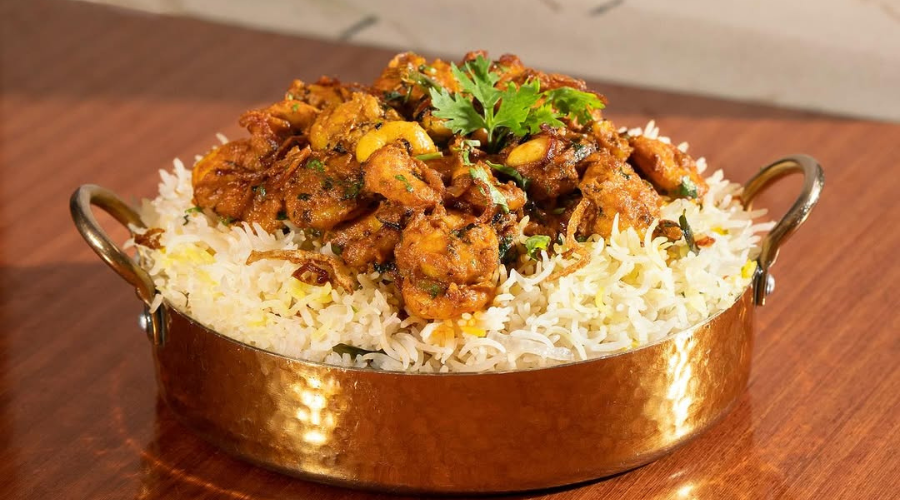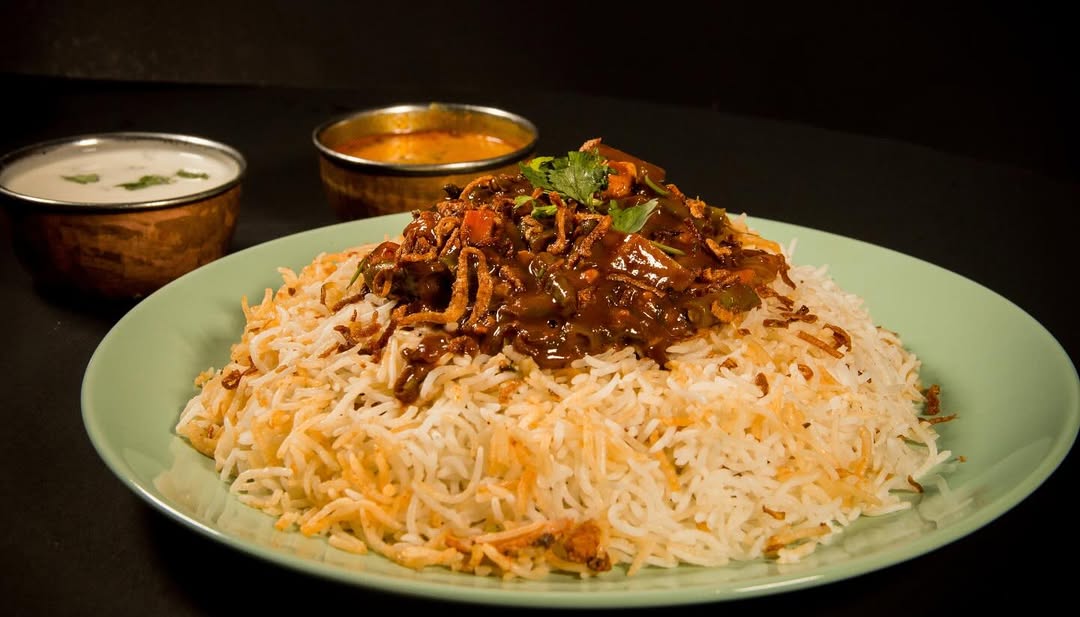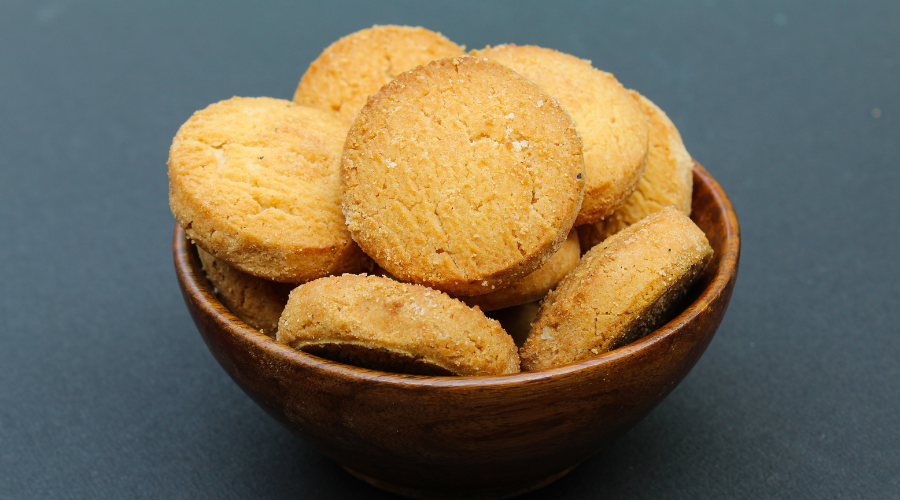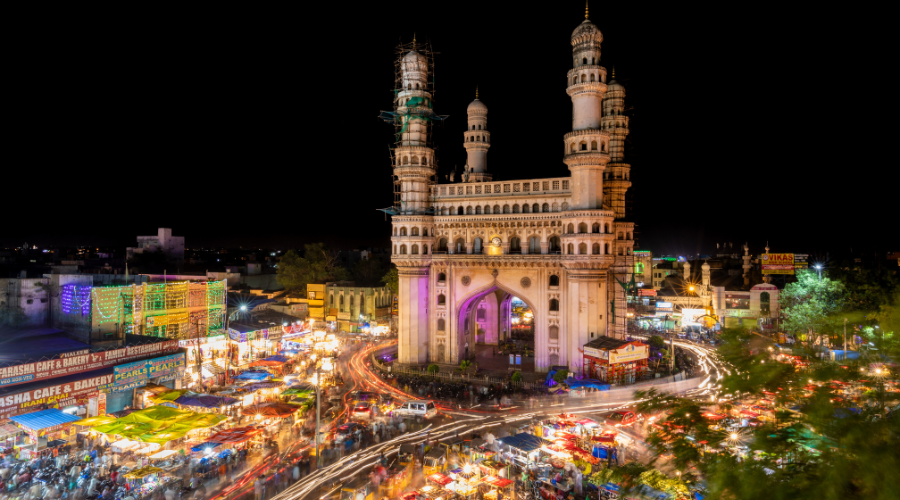What To Eat In Hyderabad: A Melting Pot of Nizami, Andhra & Telangana Cuisines
In Hyderabad, the biscuits are warm, the curries tangy, and the biryanis and the kebabs the best you could have tasted so far
Growing up in Delhi, I have always found it fascinating that my typically Punjabi father not only spent his formative years in Hyderabad but that his north Indianness was confined just to his mannerisms. At the dinner table, he became a Hyderabadi through and through—the unimaginably high tolerance for spice, the preference of rice over roti, using fingers to savour the former, and the inclusion of Malaga podi (gunpowder) in his daily diet.
His fondest memories of the city—the only one that has been kind to him, he says—include his ancestral home in Himayat Nagar and the Himayat mango. He would love to go back someday, but until then, he has Hyderabadi food as consolation.
However, diverse food is much beyond just a “consolation”. You have three broad experiences within its fol—dHyderabadi, which I will be referring to as Nizami (as it was the Nizams of Hyderabad who popularised it) Andhra—the food native to Rayalaseema, coastal Andhra and Telangana—known for its unique spices and the bakeries serving the delicious pairing of Irani chai and Osmania biscuits. With such a vast world to explore, I set out for not the first and last time in Hyderabad, a city that boasts a culinary tradition that stays with people long after they leave.
Andhra & Spice
Geography always plays a key role in cuisine. In the Andhra region, chillies grow well. However, the high level of sourness found in the region’s dishes sets them apart. Also, paddy is plentiful given how well irrigated the area is because of its location along the Krishna-Godavari basin. However, one must acknowledge regional differences, such as spice levels (the highest in Rayalaseema). Finally, as Jonty Rajagopalan, founder of Detours India, told me, “Andhra food celebrates vegetables in their chutney-fied form.” Podis (lentil powder) and pachadis (vegetable accompaniments) are considered dishes independently. Leaves such as gongura have a unique sour taste and are also used in plenty of Andhra dishes.
There is no better introduction to the cuisine than at Kakatiya Deluxe Mess in Hyderabad’s Ameerpet. Set up in 1992 by Ratna Shekhar (who has turned it into a successful family-run business) and symbolic of the fast-moving mess culture – sit, order a thali, refill, all in under 20 minutes – it used to be a regular basement eatery before a recent renovation gave it a contemporary look. From 1 pm onwards, it is packed. The thali, which differs daily, is quite the bang for the buck (120). On Friday, I went, including tomato pappu (or dal, tangy and sweet to perfection), fried okra, and cucumber gravy. Then I ordered the prawn curry, which was incredibly fresh, and the double omelette, as one of Shekhar’s family members suggested. An odd suggestion, but it turned out to be one of the most sumptuous (though spiciest) omelettes I had ever eaten.
This was, however, not my first taste of Andhra food. Years ago, I visited The Spicy Venue in Hyderabad’s posh Jubilee Hills with my cousins, and it became our go-to place. When I mentioned this to the owner, Tummala Srinivas Sampath, during my latest visit, he smiled and said, “This place is quite the neighbourhood eatery.” The décor is plain, but you feel part of a homey environment, with enough child-friendly options. I was here for the MLA potlam biryani (minced-meat and prawn Andhra-style biryani rolled in an omelette). It was a celestial experience from the very first bite. Another signature here is the Apricot Delight, a retake on the famous Hyderabadi qubani ka meetha, a fitting conclusion.

After my trysts with what I would call authentic Andhra and restaurant-style Andhra food, it was time to check out a place that pushes the envelope. Ulavacharu is known for its 18 types of pulaos and 14 kinds of starters, and its founder and managing director, N Vinay Kumar Reddy, considers each one a speciality. His Gachibowli branch (the first is in Jubilee Hills) has a decor borrowed from South Indian temples and old palaces, with original elements such as doors and parts of chariots. The attention to detail, however, was best reflected in the food, with each dish tasting unique. Ulavacharu itself means horse gram soup – an Andhra staple. The bamboo chicken served here is cooked in a hollow bamboo stick and has a subtle yet appealing woody flavour. I tasted five types of pulao, including the raju gari kodi, with steamed chicken and sticky rice, their hottest seller and quite suitable for those who do not prefer dry pulaos and the guthivankaya, a straightforward and easy-on-the-tongue dish. The fact that it’s the owner’s mother’s recipe gives the dish a nice touch.

My final stop was not a restaurant, but a bandi. These stalls are central to Hyderabad’s street food, and I picked Ram ki Bandi for good reason. Ram Kumar Shinde’s story is a rags-to-riches one in which a young MBA takes charge of his father’s stall and makes it a roaring success. Now also a restaurant owner, I met him at his lone Mozam Jahi Market Circle stall at 3 am. While the rest of Hyderabad slept, this intersection buzzed with college students and BPO employees as two carts churned out 15 dosas every few minutes, with Ram at their centre. Mouth-watering items such as “pizza dosa”, “schezwan cream dosa” and “cheese idli” were the crowd favourites. Occasionally, Ram would slip by a statement such as, “Sir, upma zabardast hai. Aur ingredients pe no compromise” (The upma is amazing. And we do not compromise on the ingredients).
Baking Good

Hyderabad’s bakery culture goes back at least to the time of Mir Osman Ali Khan, the last Nizam of independent Hyderabad, who wanted a sweet and salty biscuit. Thus, Osmania biscuits were invented. These soft, buttery treats are best enjoyed dipped in Irani chai, a milky tea primarily served in Irani cafés. Three bakeries – Nimrah, Niloufer and the 1953-established Karachi that is well known around India.
I must confess that I only visited Nimrah Café and Bakery because of its location adjacent to the Charminar. However, no matter how beautiful, my interest in the monument was entirely overshadowed by the hospitality shown by Abood Bin Aslam, a member of the family that runs the café. Started in 1993 by his father, the place has become phenomenally popular. It prepares more than 80 bakery items and, every morning, fresh batches of over 25 varieties of biscuits. The rates are in single and low double digits, and with Aslam exhorting you to “try” them all, you end up feeling guilty. For him, however, interacting with visitors is a passion. I also tried the dilkhush here, a soft bun filled with dates, nuts, tutti-frutti, coconut and cake – all for 12. With the Irani chai (I also tried its pauna variant, which is more milky) as a cherry on top, Nimrah far exceeded my expectations.
Nizami Dining
Hyderabad, like Delhi, was exposed to the Islamic world in the medieval times. It was with the Bahmani Sultanate (of Irani ancestry) and then the Turco-Persian Qutb Shahi dynasty that Muslim food came to be seen in the area. Once the Nizams began to rule, their dishes gained popularity. Yet it’s never just the cultural aspects that help a cuisine develop – biryani, for instance, has benefited from the abundance of rice. Today, we have a meat-, wheat- and rice-rich cuisine that gives other Indian cuisines a run for their money.
A dinghy shop with a green façade, Khadeem Munshi Naan looks precisely as it did 70 years ago. First established in 1851 at a location forgotten with time, it all started when Mohammed Hussain, who worked as a munshi (accountant) in the Nizam’s office, decided to start a naan business. Khaja Abdul Hameed’s descendants continue the tradition two centuries later, selling the bread at 14 a piece. Located near the iconic Purani Haveli or the erstwhile palace of the rulers, I found that these tandoor-made naans, especially the signature chaar-koni (four-sided) one, stayed as soft the next morning as they were when fresh.
From here, it made sense to visit Charminar and get a taste of Old Hyderabad. A heavy monsoon shower accompanied our visit. Seeking shelter underneath one of the monument’s gateways, we found ourselves by a tiny food stall called Royal Fish. The fried fish here, with a squeeze of lemon, is a wonderful rainy-day snack. The place is open 21 hours a day (4.30 pm to 1 pm) and located right opposite the popular kebab place, Hotel Shahran.

Yet, despite their iconic status, not everyone gets what is due. Bade Miyan Kebab‘s fourth-generation owner, Syed Shaji, may be from the lineage that invented the pathar ka gosht. His shop, tucked in a corner on the wrong side of the Upper Tank Bund Road, is the original, so stay clear of the other Bade Miyans. After all, even the Salar Jung family once ordered from here. The gosht is a mutton kebab simmered on a stone slab, which results in a soft and succulent texture. Who knew that even stones could create magic?
However, it is a peak period for Maqdoom bhai and his paya shop in Mangalhat. The second we walked in, we knew it was the right place as men stood outside, enveloped in clouds of steam, stirring a stew in a giant vessel. The place was brimming with life. Smiling, cheerful locals feasted on paya (goat foot), jabra (jaws) and zabaan (tongue) or enjoyed the nihari (stew) in which these cuts are served. The nihari has a special place in Nizami food, and Hyderabadi claims to have invented it. I found paya to be gelatinous with a mild flavour of ez patta, gulab jal, and garam masalas. I spoke to Mahboob Alam Khan, a prominent food historian who has revived many old recipes, and whose nephew, Qutub Alam Khan, fondly calls him Chicha (uncle). As of 2016, the youth also opened a restaurant at Masab Tank inspired by MA Khan, named Chicha’s. We found a chic, contemporary vibe and a colourful décor that went well with the food. On a Friday, Chicha’s becomes one of the few places to get good haleem (a thick wheat- or barley-based mutton stew) all year round, not just during Ramzan. Qutub and one of his partners, Fauzan Khan, were keen for us to try some rare dishes – the sweet shaadi ka red chicken (a tomato-based roast, an iconic Hyderabadi wedding dish) and the spicy talawa gosht (fried mutton). But I may even fly back to Hyderabad for the dish, the mulla do pyaaza (talawa gosht placed on top of a roghni roti, made from a dough mixed in milk and saffron).
Don’t miss the mirchi ka saalan (curried chilli peppers) when you visit Hotel Shadab at Ghansi Bazaar. I had heard that this well-known Hyderabadi restaurant, with its old-school façade and interiors, served the best biryani in the city. To see for myself, I visited their biryani-making centre in the morning, where huge handis were being prepared. First, the raw meat is mixed with all ingredients (spices, masalas, saffron water, fried onions, etc.), then half-cooked rice is placed on top. What results is a delicious mélange of flavours.
In the evening, I explored Shadab for a bit. While the ground-floor section reflects old architecture, where mostly men enjoy Irani chai and cigarettes, the first floor is a family space. Here, I met the older brother, Mohammed Omer Adil, who told me how he, when he was 16, had to assume responsibility for the restaurant after his father’s death. He balanced school with work, and against all odds, took the place to greater heights. When I finally tasted the biryani, I understood what a labour of love it had been. It was the finest I had ever tasted, and I understood what a labour of love it had been. It was the finest I had ever tasted.